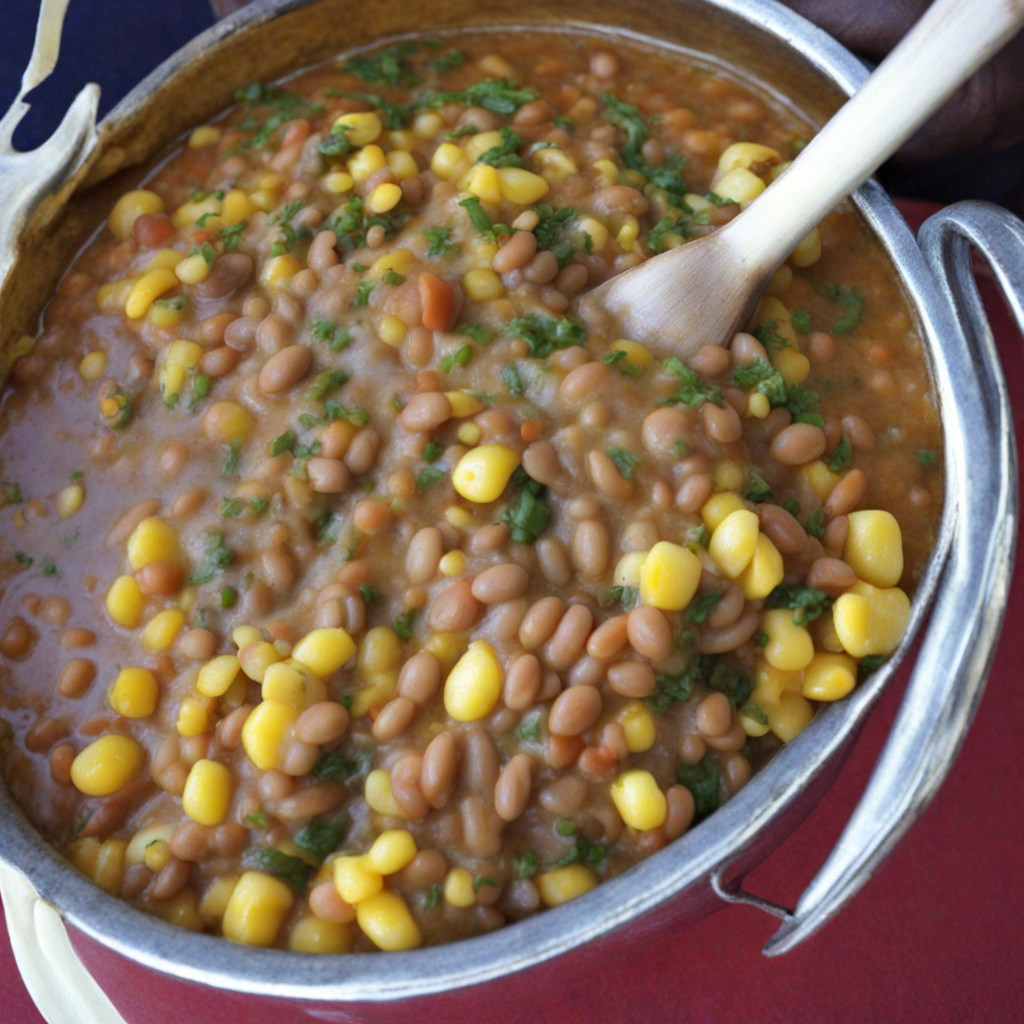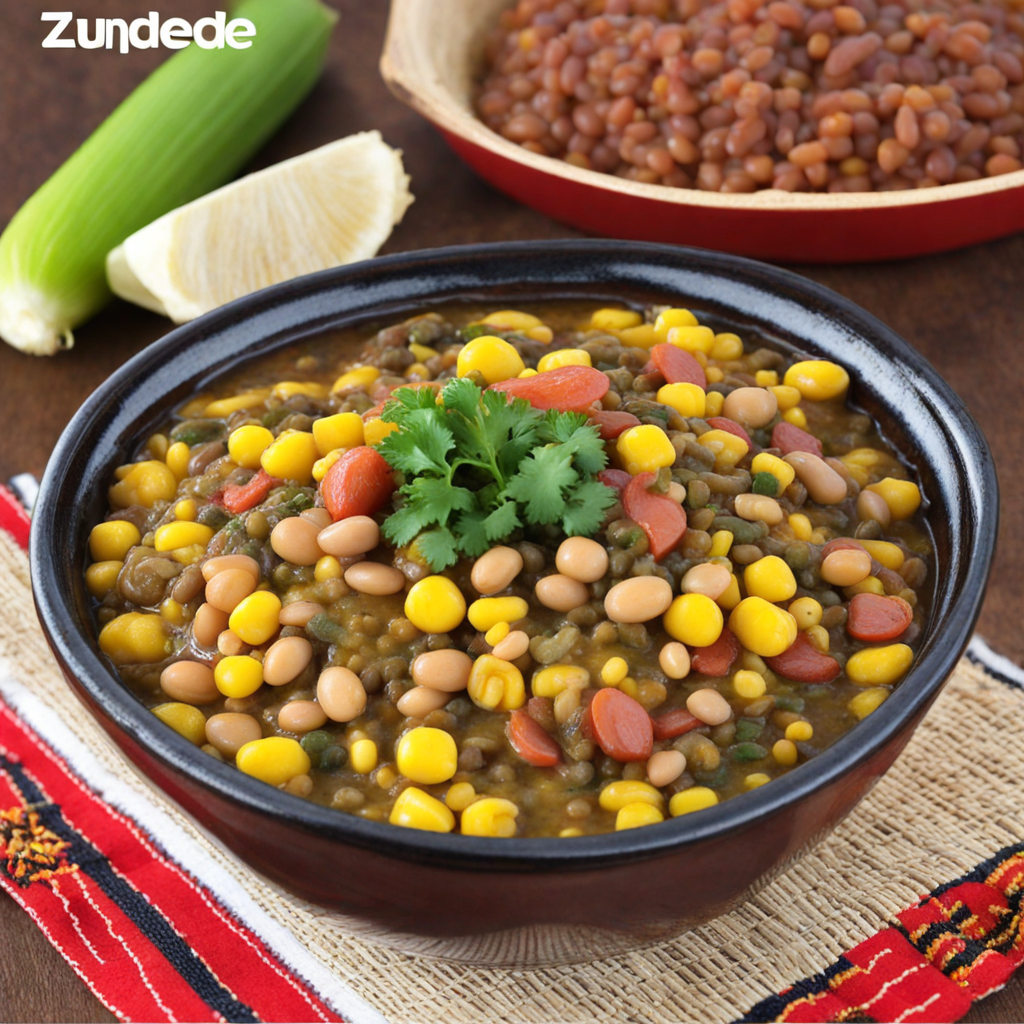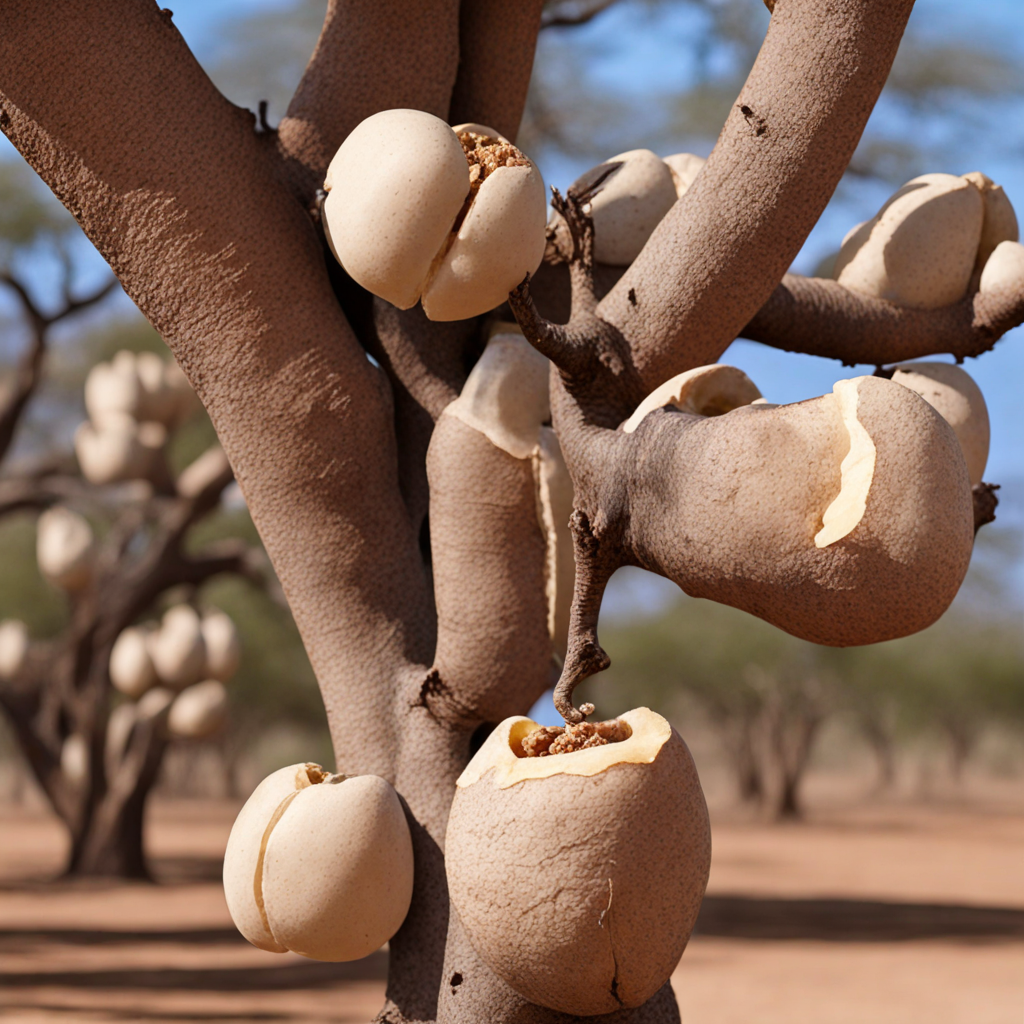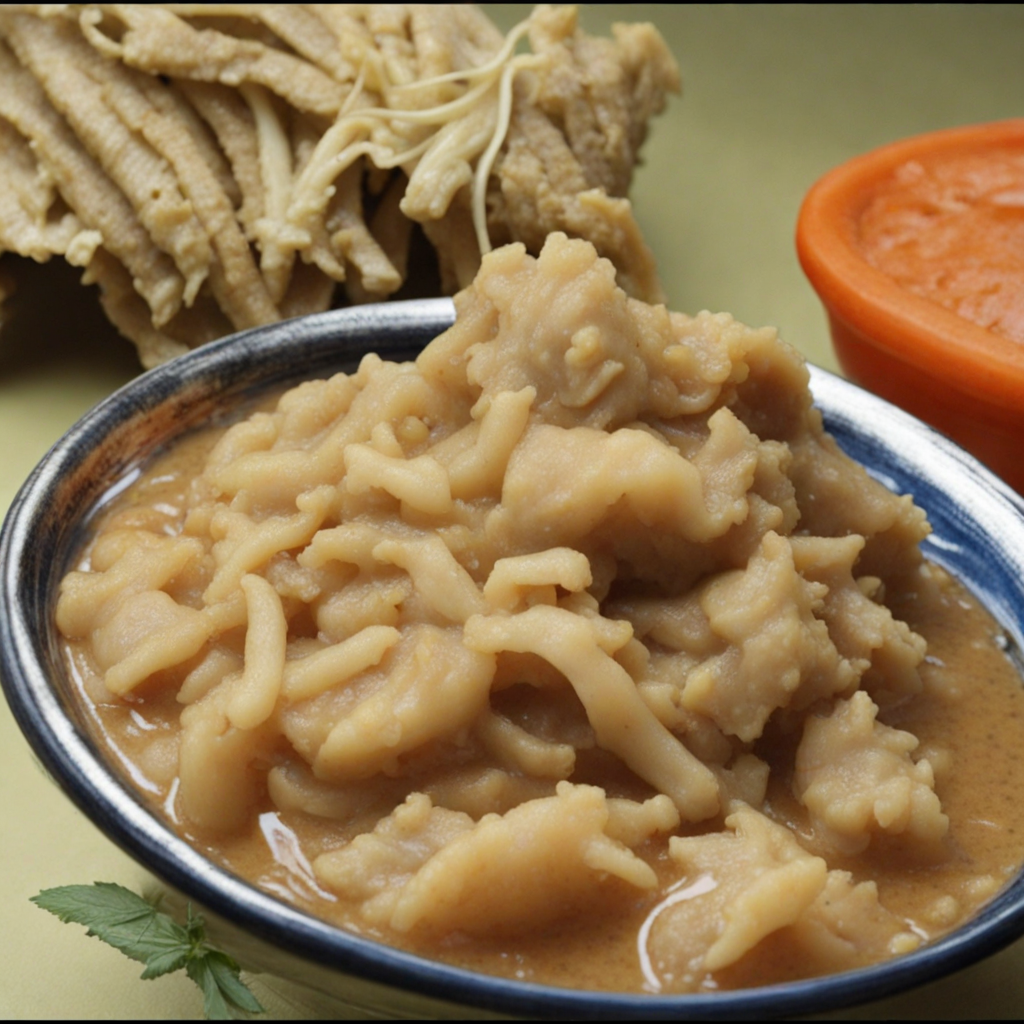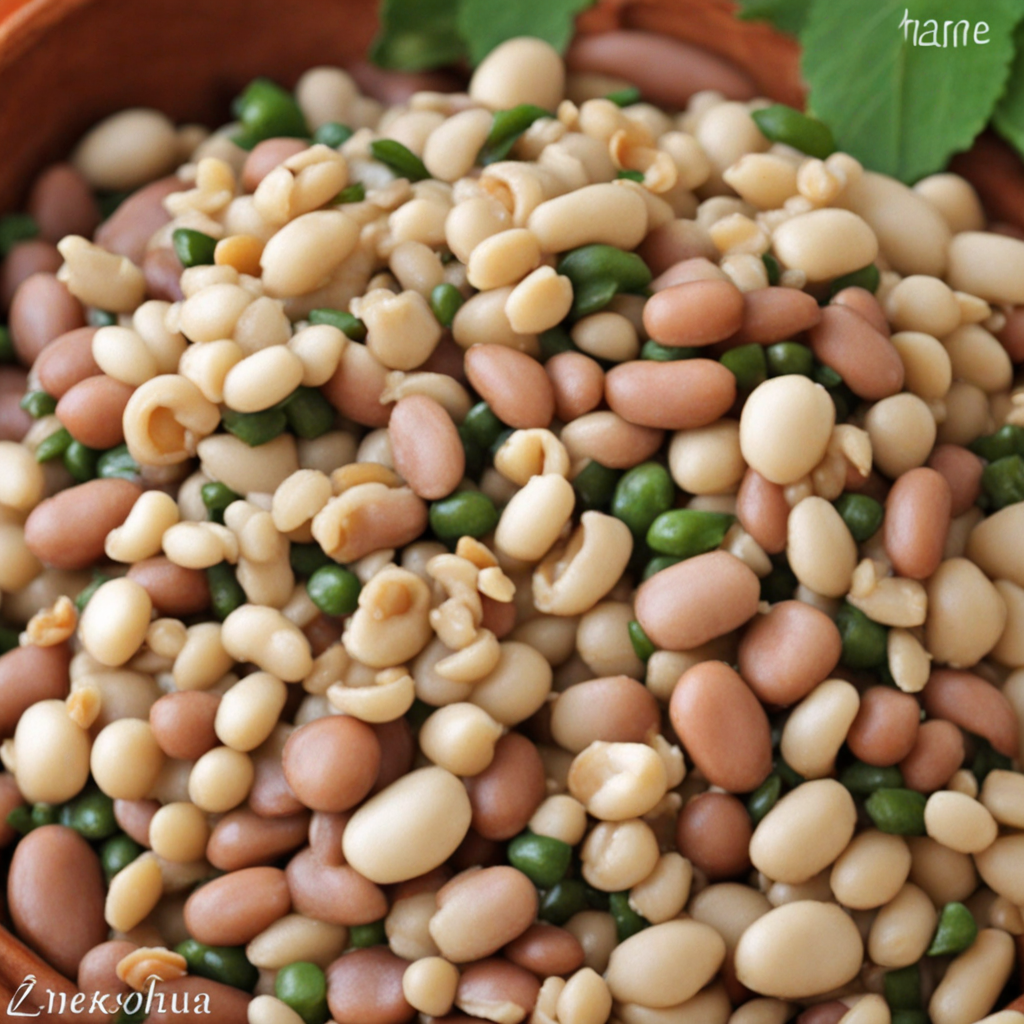Zunde
Zunde is a traditional Zimbabwean dish that showcases the country's rich agricultural heritage and the flavors of its staple ingredients. At its core, Zunde is a delicious porridge made primarily from ground maize, which is a key component of many Zimbabwean meals. The maize is usually cooked until it reaches a creamy consistency, providing a comforting base that can be enjoyed on its own or paired with various accompaniments. The texture is smooth and hearty, making it a perfect dish for both breakfast and as a side during lunch or dinner. What sets Zunde apart is its versatility and the way it can be customized. Often, it is enriched with seasonal vegetables, such as pumpkin leaves or any available greens, which not only enhance its nutritional value but also add a burst of color and flavor. Additionally, Zunde can be flavored with local spices or herbs, creating a delightful fusion of tastes that reflect the vibrant culinary culture of Zimbabwe. Some versions may even include a hint of sweetness from added ingredients like groundnuts or sugar, making it appealing to a wide range of palates. Sharing Zunde is a cherished tradition, often served during communal gatherings and celebrations, emphasizing the importance of community and togetherness in Zimbabwean culture. It is typically enjoyed with stews or grilled meats, allowing diners to experience the dish's adaptability as it complements various flavor profiles. Whether you're savoring it for breakfast or as part of a larger meal, Zunde offers a unique opportunity to explore the comforting and hearty flavors of Zimbabwean cuisine, inviting you to embrace a new and enriching culinary experience.
How It Became This Dish
The History of Zunde: A Cultural Culinary Gem of Zimbabwe #### Origins of Zunde Zunde is a traditional Zimbabwean dish that holds deep cultural significance, particularly among the Shona people. Its roots can be traced back to the pre-colonial era when communities relied heavily on agriculture and the land for sustenance. The word "zunde," which translates to "a field of pumpkins," encapsulates the essence of this dish, as it is primarily made from pumpkin seeds and is often associated with the harvest season. The practice of cultivating pumpkins dates back centuries, as these hardy plants thrive in Zimbabwe’s diverse climate. Pumpkins were not only valued for their flesh but also for their seeds, which are rich in nutrients. The traditional method of preparing zunde involves harvesting the seeds, drying them, and then grinding them into a fine paste that serves as the base for the dish. This method reflects an ancient understanding of sustainable agriculture, demonstrating how early communities made use of available resources. #### Cultural Significance Zunde is more than just a dish; it is a symbol of community and togetherness. Traditionally, the preparation of zunde is a communal affair. Families and neighbors gather to harvest pumpkins, and the process of making zunde often involves many hands. This collective effort embodies the spirit of cooperation and unity, which is a cornerstone of Shona culture. The dish plays a vital role in various ceremonies, including weddings, funerals, and other significant life events. During these gatherings, zunde is often served alongside other traditional dishes, emphasizing its importance in the culinary repertoire of the Shona people. The act of sharing zunde during communal meals strengthens social bonds and reinforces the cultural values of hospitality and generosity. Moreover, zunde is often associated with the seasons, particularly the rainy season when pumpkins are at their peak. This connection to the agricultural calendar highlights the integral relationship between food, culture, and the environment in Zimbabwe. The cyclical nature of planting, harvesting, and feasting reflects the rhythms of life in rural communities. #### Development Over Time As Zimbabwe underwent significant social and political changes, so too did the preparation and perception of zunde. The colonial era brought about new agricultural practices and the introduction of foreign crops, which impacted traditional farming methods. While many Zimbabweans adapted to these changes, zunde remained a steadfast element of cultural identity. In the post-colonial period, particularly in the late 20th century, there was a resurgence of interest in traditional foods. As urbanization increased and many people moved to cities, the need for convenience led to a decline in the preparation of traditional dishes like zunde. However, food movements advocating for the preservation of indigenous culinary practices emerged, rekindling interest in traditional dishes. The revival of zunde can be attributed to several factors. First, there has been a broader global trend towards healthy eating and a return to organic, locally-sourced ingredients. The nutritional benefits of pumpkin seeds, which are high in protein, healthy fats, and essential vitamins, have garnered attention from health-conscious consumers. This renewed interest has led to zunde being featured in modern culinary practices, both in Zimbabwe and abroad. Secondly, the rise of cultural tourism in Zimbabwe has brought traditional foods to the forefront. Visitors to the country are increasingly seeking authentic experiences, and traditional dishes like zunde offer a glimpse into the rich heritage of Zimbabwean cuisine. Local chefs and home cooks have begun to showcase zunde in restaurants and culinary festivals, highlighting its cultural significance and delicious flavors. #### Modern Interpretations In contemporary Zimbabwe, zunde is often prepared with variations that reflect changing tastes and lifestyles. While the traditional recipe remains popular, chefs are experimenting with new ingredients and techniques to create innovative dishes. For instance, zunde is sometimes combined with ingredients such as peanuts, maize, or even spices to add depth to the flavor profile. These adaptations speak to the dynamic nature of food culture, allowing zunde to evolve while still honoring its heritage. Moreover, the rise of social media has played a crucial role in the dissemination of traditional recipes like zunde. Food influencers and bloggers are sharing their interpretations of the dish, reaching a global audience and sparking conversations about Zimbabwean cuisine. This digital renaissance has not only elevated the status of zunde but has also fostered a sense of pride among Zimbabweans in their culinary heritage. #### Conclusion Zunde is a dish that embodies the rich tapestry of Zimbabwean culture, representing the agricultural practices, communal values, and historical transformations of the region. From its origins as a staple food of the Shona people to its modern interpretations, zunde has withstood the test of time, adapting to the changing dynamics of society while remaining a beloved symbol of heritage. As the world becomes increasingly interconnected, the story of zunde serves as a reminder of the importance of preserving traditional foodways. It highlights how food can be a bridge between generations, connecting the past to the present and fostering a sense of belonging. In celebrating zunde, we celebrate not only a dish but also the rich cultural identity of Zimbabwe and the enduring spirit of its people.
You may like
Discover local flavors from Zimbabwe


